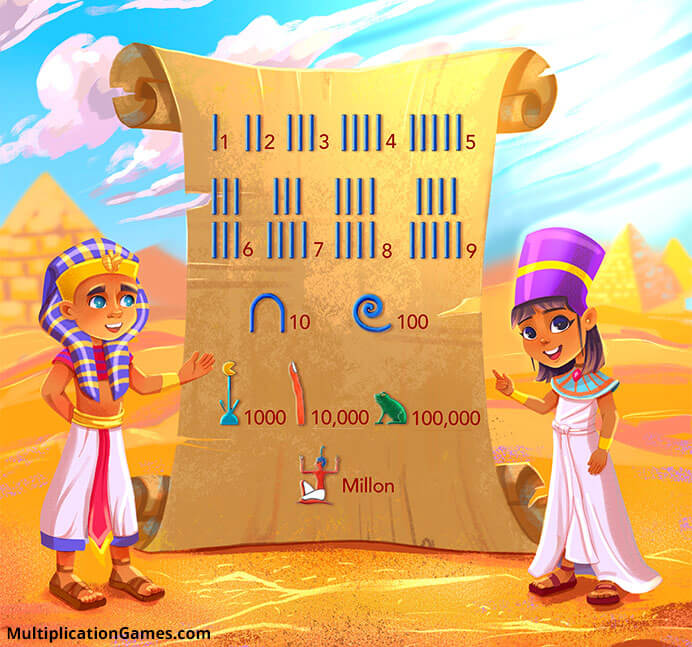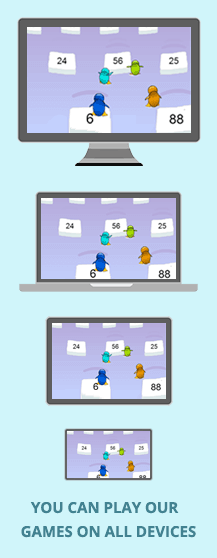The History of Multiplication: Origins, Inventor, and Fun Facts
By Megan - 12/12/2022
Multiplication has a long and complicated history that scholars widely debate. The first concept of multiplication emerged thousands of years ago, likely out of necessity for combining a wide range of numbers or object values.
As technology has evolved, experts have gained access to new information about the usage and universality of mathematics. In this article, we will explore the history of multiplication and its journey across the globe. Keep reading to learn everything you need to know.
The History of Multiplication and Early Usage

One of the earliest known sightings of multiplication came from the ancient Egyptians and Babylonians. Typically they would use multiplication to streamline a system of doubling, which allowed them to manage and track large quantities of livestock. During this time, people were using multiplication to calculate things like area and volume when they needed to build products or architectural structures.
At the time, people didn’t know multiplication in the way we do now. Many kids see multiplication as a subject in school; however, it initially emerged to create solutions for everyday problems. Today, multiplication is used in various applications, including business, finance, science and engineering.
Alongside the Egyptians, multiplication migrated to ancient Greece rather quickly. For this reason, the Greeks are known for developing the first formal multiplication algorithm. This became known as the “method of exhaustion”, which was remastered by Hindu mathematicians. Once Arabic scholars began traveling to new regions, multiplication made its way through European countries.
The dates of multiplication’s creation and origin are unknown, as there weren’t any methods of tracking this information on a global scale. Like neolithic cave paintings, many experts believe that mathematics was around far before it was given a name. Some theories and skeptics believe that it was one of the first learned skills since math is so ingrained in the natural world around us.
In the 21st century, multiplication is taught to school-aged kids worldwide. Math is one of the only subjects transcending the borders of race or culture, making it a priority for kids of all ages. Understanding the long history of multiplication can help your children connect with the true power and evolution of this math skill set. It’s easy for students to detach from the importance of what they are learning, but a simple reminder can help them reconnect with and honor their education.
Who Invented Multiplication?
The multiplication table is most often associated with the ancient Greek mathematician Pythagoras (570 - 495 BC). For this reason, some regions refer to it as the table of Pythagoras, most often in French, Italian and Russian communities. The individual founder of multiplication is unknown, although there are a variety of theories available today. Many people believe it became a fusion of various cultures and expert strategies, over time, shaping it into the advanced multiplication we know today.
Fun Facts About Multiplication’s History - Great to Share With Kids!
William Oughtred was a clergyman who lived from 1574-1660. He used to offer free math lessons and was the first to use the symbol “x” for multiplication.
Multiplication is a form of arithmetic. The word arithmetic emerged from a Proto-Indo-European origin, meaning “to reason, count.” Some other forms of arithmetic are geometry, algebra and topology.
Over 4,000 years ago, in ancient Babylonia, the first multiplication tables were created. The tables were built on the groundwork of base 60, although base 10 is similar to what we use today. In around 305 BC in ancient China, they were using tables that were closest to our modern-day depiction of multiplication.
German polymath, Gottfried Leibniz, changed the future of the calculator. At the time, calculators could only perform addition and subtraction. However, he created a device called the Step Reckoner that could perform addition, subtraction, multiplication and division automatically.
During the medieval era, ancient Europeans performed long multiplication using the lattice method. In some areas, this was known as the jalousie or gelosia form of long multiplication. The various names multiplication has around the world prove just how diverse it was in our global history.
Teach Your Kids How to Learn Multiplication Through History
The majority of kids today struggle to make associations between what they are doing in school and how it relates to the greater context of the world. Some kids don’t like mathematics and think it will be pointless to their dream career or future job. However, the truth is that mathematics is all around us. All kids have to do is take a look at our history to discover the true power and universal nature of the subject. Without mathematics, we wouldn’t have some of the finer things in life, like technology, architecture, businesses, money, and more.
The next time your students or children get down on themselves about math, explain to them how exciting and long-spanning its origins are. This might rejuvenate their passion to be a part of something that has been shared by generations of people around the world.






